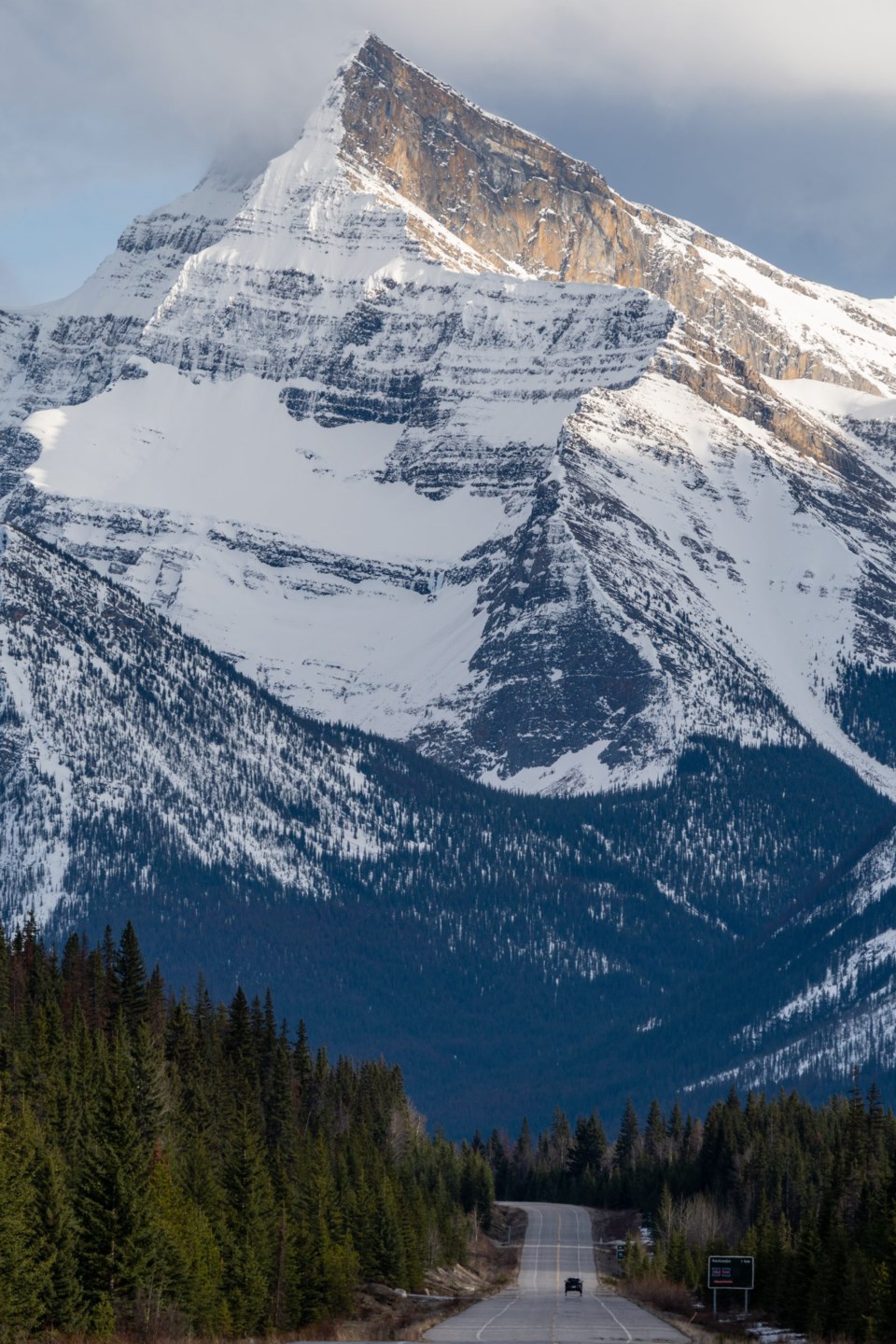Scott Hayes, Local Journalism Initiative Reporter | [email protected]
The problem with receiving more than two million visitors every year in Jasper National Park is that not all of them know what it means to drive safely down the Icefields Parkway or stay safe in avalanche country.
The good news is that there are simple solutions, said Deryl Kelly, visitor safety supervisor with Parks Canada.
“They need to understand that this is a wild place,” he said. “It's not the same as going through the cities or anything where you have constant cell phone connectivity, or you have the ability to call 911. That's not the case when you leave Jasper.”
The Icefields Parkway on Highway 93 is 227-kilometres long and runs basically parallel with the Continental Divide. Where there are mountains covered with metres of snow, there runs the risk of avalanches.
This risk is especially great when you reach the midway mark and drive past Parker's Ridge, 113 kilometres south of Jasper. It’s as beautiful as any spot along the Parkway but more precipitously close to trouble than might be apparent.
“You're actually driving through the track of that avalanche path. It's not that you're at the bottom of the path; you're in the middle of the path when you drive through there. Avalanches start right up above you and are actually accelerated by the time they hit the highway,” Kelly said.
“That's probably our most dangerous area right there. We're pretty quick to do control work there. We monitor that one very, very closely.”
Right after that ridge is Big Bend: a loop out to the west past a human made slope that Parks manages closely. It’s another bad spot where some drivers who are distracted by the scenery will find themselves in the ditch because their rental vehicle doesn’t have the right tires.
Jasper National Park usually sees eight-to-15 avalanche-based road closures in a season. Each of those closures will vary in duration from a few hours to a few days if it’s related to a big slide or a big storm is at play.
Kelly recommended a bit of planning by checking out the road conditions via Alberta 511 first before you put the keys in the ignition. The service can be reached by calling 511 or by visiting 511.alberta.ca.
“Alberta 511 is super critical for those folks that aren't comfortable driving down the back country highway, like the Icefields Parkway.”
While you’re on the road, he said to drive defensively, leave a lot of space between people, slow down, and continue to watch for wildlife, although it's typically not as much of an issue down the parkway as it is on Highway 16.
Whether you’re driving or out hiking in the backcountry, it’s also important to check on the Mountain Information Network (MIN) in the Avalanche Canada, found at www.avalanche.ca/jasper. It’s a new website this year, so people should spend some time becoming familiar with it and learning how it works and what information it offers.
“We've really tried to push folks to share their trip report on there because that's really a big one to help us out.”
Backcountry users should know to look for the weather, for the avalanche conditions, and for local knowledge. The MIN is a way for the public to share their experiences of conditions.
“For a lot of folks and for us as forecasters, that stuff is super valuable. We don't get the chance to actually talk to everyone out in the backcountry. We don't get a chance to be everywhere in the backcountry. What happens in Maligne is quite a bit different than what happens in the icefield.”
For backcountry users, you will need essential safety gear and avalanche training, including having and knowing how to use a transceiver, a shovel, a probe and a communication device.
“You need to have some communication because you just don't know what could happen,” Kelly said.
“It doesn't take much to actually get hurt (so) that you can't move quickly and then you're gonna spend the night out again. Those are terrible ways to spend the night if you're not prepared for it.”
There are operators and mountain guides in town that offer avalanche training and teach how to use those devices.




